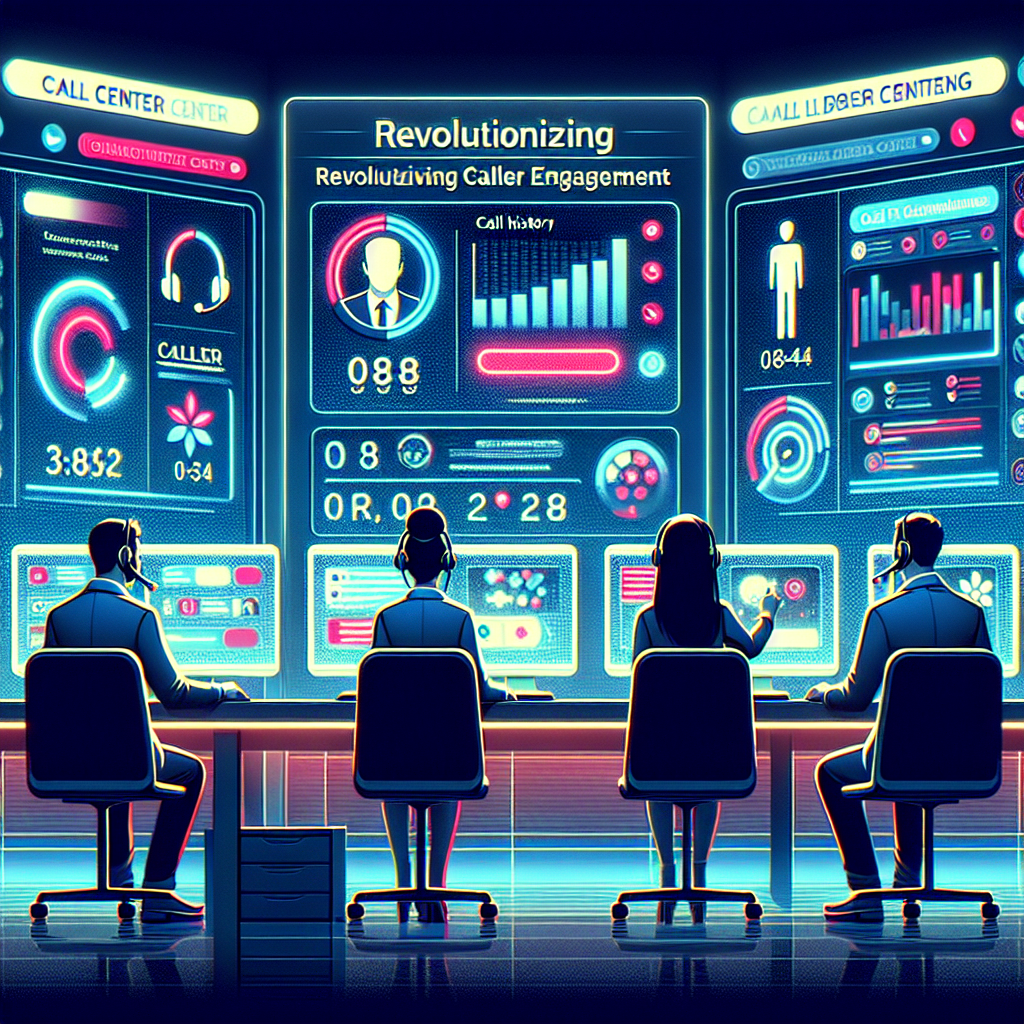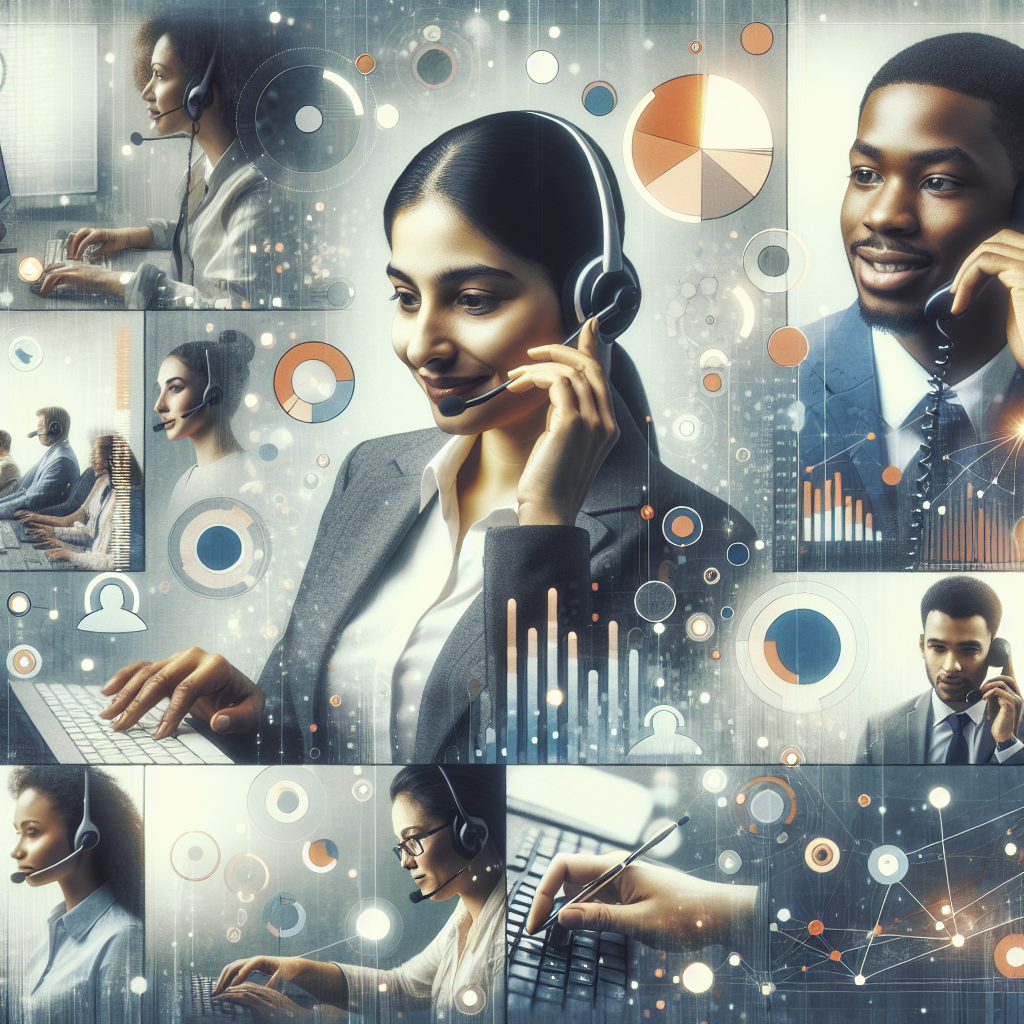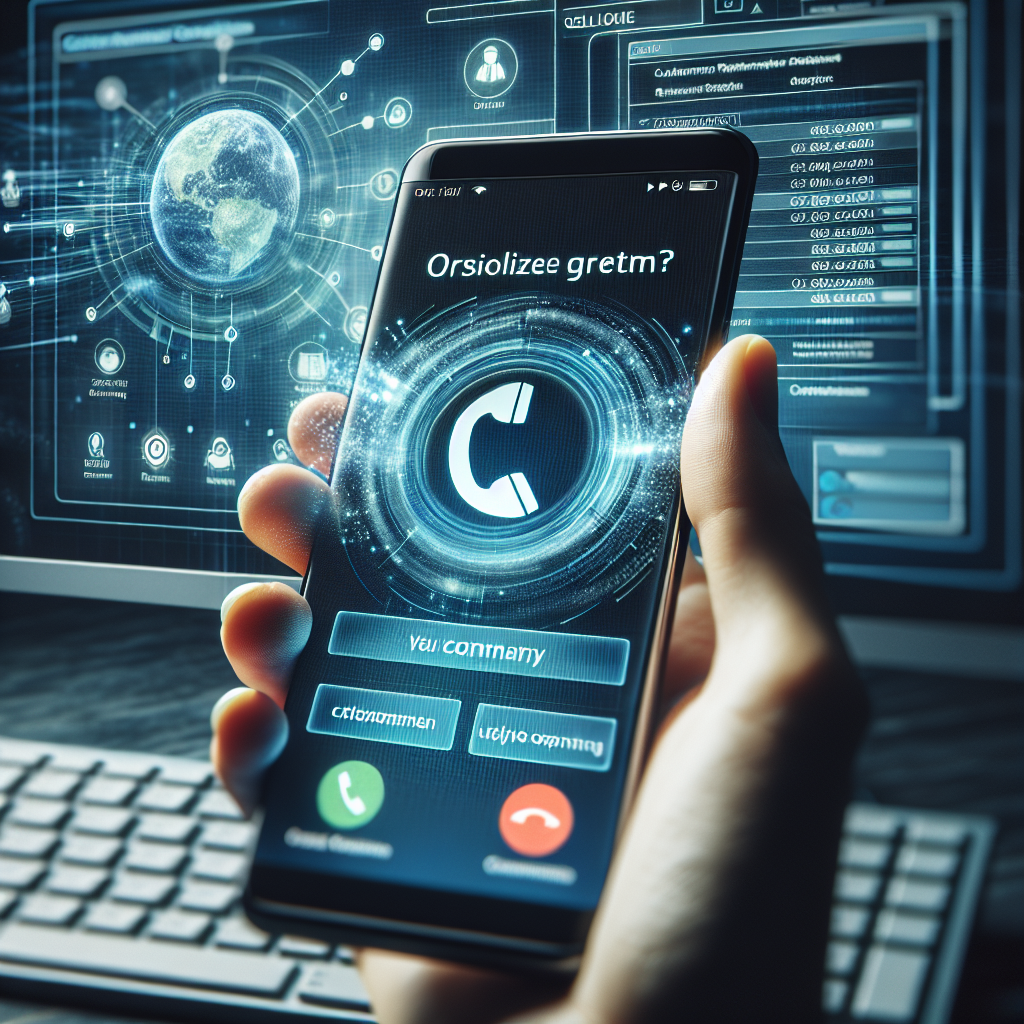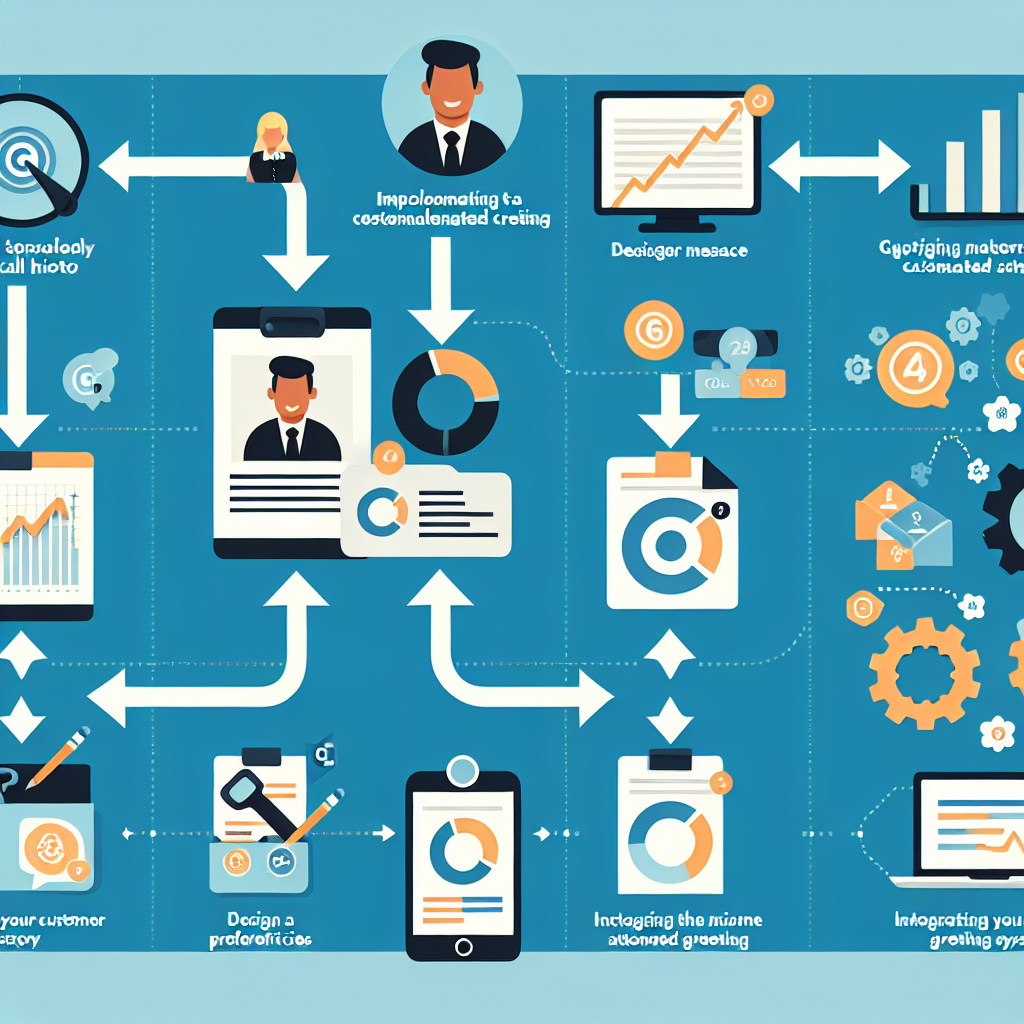
Nowadays, customer service interactions are advancing beyond a one-size-fits-all chat or telephone session. Technology delivers environments where every interaction can be personalized, enriching the customer experience. At the forefront of this evolution is a concept both simple and innovative: automated personalized greeting messages based on caller history. This intelligent system leverages caller data to tailor greetings, enhancing rapport and engagement right from the start.

The basic functionality of this personalization tool remains consistent across its applications: When a caller contacts customer service, the system automatically taps into stored past interactions and personalizes the welcome message accordingly. This could involve acknowledging previous issues, continuing earlier conversations, or referencing the customer's preferences. The aim is to create a more intimate, informed connection between brand and customer.
This increase in relevance has several potential benefits. Firstly, it accelerates resolution times, as representatives can skip generic lines and dive directly into ongoing issues. The familiarity also fosters greater customer loyalty, as customers perceive a personal concern for their experience. Consequently, it helps improve overall customer satisfaction scores and boost sales.
These advantages provide a clear incentive for businesses to adopt automated personalized greetings based on caller history, ushering a new era of customer service. However, its ultimate success still relies heavily on systematic execution and appropriate utilization.
In conclusion, as businesses continually strive to enhance customer relations, embracing this customer-centric approach could indeed set them apart. Just as the telephone all but eliminated the necessity of face-to-face communication and the internet allowed for 24/7 assistance, so might automated personalized greetings redefine the future of customer service.
Artificial Intelligence (AI) and Machine Learning (ML) have been at the forefront of revolutionary technologies incorporated to serve a variety of uses, one of which is the personalization of greeting messages based on caller history. This particular application leverages intricate algorithms and substantial data from past interactions to customize messages for every unique caller.
The kernel of this technology lies in the ability of these ML algorithms to learn and adapt. Especially, supervised learning techniques come into play, where the models are trained using pre-existing labeled datasets. These datasets contain historical call logs detailing various caller behaviors and reactions to different greetings. By analyzing patterns within this data, these algorithms can predict the best-suited greeting for any subsequent call.
Learn more about supervised learning here.
Another cornerstone in this system is Natural Language Processing (NLP). NLP is a subfield in AI that specializes in the interaction between computers and humans through natural language. Its main focus is to enable computers to understand, interpret, and generate human language in a valuable way. Therefore, it is a key component in automating greeting personalization, as it allows for understanding the context of past interactions, thereby informing the system on how to respond accordingly.
For a deeper dive into NLP, click here.
A crucial matching piece in this puzzle is the implementation of a Content Management System (CMS) to store all the variants of personalized greetings. This system also catalogs caller history and past interactions, which can then be accessed by the ML algorithm to personalize future interactions with each unique caller.
Shaping the future for caller interactions, AI and ML, armed with Supervised Learning, NLP and a capable CMS, promise better user experiences by personalizing the greeting process based on caller history.
In the contemporary era of personalized customer interactions, the integration of automated personalization systems with Customer Relationship Management (CRM) systems has emerged as an innovative trend. This amalgamation allows firms to not only streamline their communication process but also enhance their relationship with customers by providing them with personalized greeting messages on every call.

In essence, the automated personalization system is linked with the existing CRM system of a company. The CRM system houses all the historical data of the caller, including their previous interactions, product/service preferences, demographic details, etc. Once a call is initiated, this data is swiftly fetched by the personalization system to generate a relevant personalized greeting.
This state-of-the-art approach ensures the callers are greeted with a message which reflects their history with the company. Such an introductory message creates an impression of care and acknowledgement on the part of the company. Therefore, integrating automated personalization of greeting messages with CRM systems acts as a formidable tool to build stronger customer relationships and elevate consumer satisfaction.
A multitude of CRM software available in the market today offer seamless integration capabilities with personalization systems. This renders the implementation phase straightforward, thereby enabling companies to quickly reap the benefits of this amalgamation.
All in all, personalized greeting messages, enhanced by the historical data culled from CRM systems, is a significant step towards realizing the dream of a truly personalized customer experience. Companies should actively consider integrating their CRM systems with automated personalization tools for greeting messages to delight their customers right from the beginning of the call.
In recent years, businesses have increasingly leveraged technology to offer personalized customer experiences. One of these methods is the automated personalization of greeting messages based on caller history. This approach to customer service not only fosters a more engaging and unique customer experience, but it also carries several potent benefits.
Customer satisfaction is one of the key benefits of personalized greetings. Through the use of Customer Relationship Management (CRM) systems, businesses can retrieve caller history and tailor their responses accordingly. Recognizing a customer's past interactions with the company and referencing details specific to them can drastically improve their overall customer experience. These personalized interactions can make customers feel valued and understood, effectively increasing their satisfaction with the service.
Simultaneously, automated personalized greetings can significantly reduce call handling time. With an automated system referencing caller history, agents can swiftly address the specific needs of the caller without spending precious time gathering the same information repeatedly. This not only streamlines the process for customers but also allows customer service agents to handle more calls efficiently.
Another noteworthy benefit lies in the enhancement of the company's brand loyalty. By displaying an understanding of customers' needs and delivering customer-centric experiences, businesses can develop a stronger relationship with their audience. This known to improve customer loyalties, which may ultimately lead to greater retention rates and a healthy bottom line.
In conclusion, the technology behind automated personalized greetings provides numerous benefits to businesses. From significantly increasing customer satisfaction, reducing call handling time, and enhancing brand loyalty, personalization is a tool that every customer-focused business must consider.
The implementation of automated personalized greeting systems constitutes a significant step forward in customer communication. These systems prove most effective when they can leverage past call history to tailor the greeting to each caller. Let's break down the process of implementing this technology into your communication setup, piece by piece.

First, **data collection** should be your initial focus. Start by gathering the necessary customer information; this includes previous call logs, key data points, and interaction history lodged within your Customer Relationship Management (CRM) software. You may want to consider using a third-party analytics service like Mixpanel to streamline this process.
Next, focus on the ** message customization**. Develop a system capable of analyzing the collected data and using it to create personalized messages. Artificial Intelligence and Machine Learning technologies will come in handy here. For this purpose, IBM Watson offers some of the best services in the market.
Finally, the **landing point**. Seamlessly integrate the new system into your existing calling setup. Make sure to test the setup to ensure everything works with efficiency and precision. Streamlining the entire process is key, ensuring the quality of your calls is not compromised, and the personalization doesn't feel forced or disjointed.
In conclusion, implementing automated personalization of greeting messages based on caller history is a significant opportunity to improve your customer communication experience. It might seem a bit complex but with the appropriate time and resources, any business can set up and enjoy its benefits.
Remember, customer centricity is the ultimate goal of this process and as long as your personalized greetings can achieve this, you've hit a significant milestone in modern customer communication.
Automated personalization of greeting messages has gained significant traction in various fields \- gaming, ecommerce, and even customer care. The ability to deliver custom greetings based on caller history has conveyed a sense of personal touch, often translating to higher customer satisfaction and improved business outcomes. Here, we will tier through a couple of real-world case studies highlighting the impact of such technologies.
Within the gaming industry, such a personalized approach has been adopted by Electronic Arts (EA), where automated greeting messages greet players based on their playing history. EA has observed increases in gaming session lengths and in-app purchases, implying a more engaged user base brought about by personalized messages. The messages connect users to their gaming history directly, immersing them deeply into their gaming experience and helping foster stronger brand loyalty.
In ecommerce, Amazon is another vivid example of utilizing automated caller personalization. Amazon's customer service uses a personalization engine to deliver automated greetings addressing the customer by name and mentioning their recent orders. This high-level personalization showcases Amazon's commitment to its customers, making them feel valued and recognized. As a result, Amazon has recorded a significant improvement in customer satisfaction scores.
On a final note, the benefits of automated personalization are not limited to these sectors alone. From healthcare to hospitality, a range of industries are exploring and implementing these systems to enhance customer experience, proving automated personalization isn't a far-off concept, but a reality with measurable business benefits.
Start your free trial for My AI Front Desk today, it takes minutes to setup!








